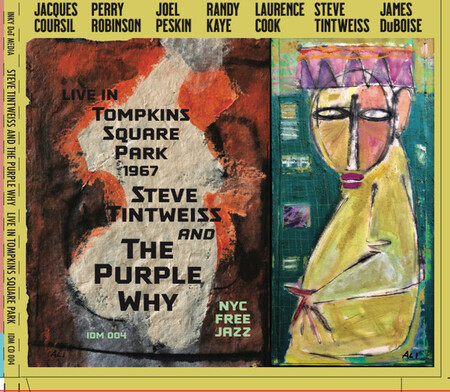
Reissues and remasters of classic jazz records have seen a resurgence in recent years, but the arrival of a previously unheard live recording from the first wave of avant-garde jazz feels almost miraculous. Live in Tompkins Square Park 1967 is just such a find; a long-buried snapshot of a musical moment when New York’s parks and lofts reverberated with restless invention.
For bassist, composer, and bandleader Steve Tintweiss, this document is not merely a nostalgic artifact. It is an assertion of his ensemble, The Purple Why, as one of the unsung forces of that creative ferment.
Tintweiss founded The Purple Why in 1967 after his stints as a sideman for the trailblazing ESP-Disk’ label. He would go on to play with Albert Ayler in what would become the saxophonist’s final musical statement. Yet, Tompkins Square Park 1967 represents the very genesis of Tintweiss’s vision; a group pushing the language of free jazz beyond the club and into the open air, both literally and spiritually.
The performance, unearthed from Tintweiss’s personal archive, captures a summer concert at Tompkins Square Park with all the energy of the audience present to see it.
The laughter, shouts, and chatter bleed into the music, producing an atmosphere of communal energy rather than distraction.
That rough-edged soundscape shines on the opening tracks, “Water” and “Land,” as the musicians navigate Tintweiss’s angular compositions with fearless commitment.
While “free jazz” is often shorthand for unbridled chaos, this record features a more nuanced interplay between structure and freedom as heard in later tracks such as “To Angel With Love,” and “Ramona, I Love You.”
Sonically, this is far from a perfected studio effort. The outdoor acoustics and amateur recording setup often drown out subtler and more delicate textures of the horns. Yet, this imbalance becomes part of the record’s documentary power: it sounds real and unfiltered on every track.
Live in Tompkins Square Park 1967 is not an album for casual listening. It’s a sonic time capsule, demanding engagement and historical empathy. For those attuned to the energies of 1960s New York avant-garde, this release is essential.
